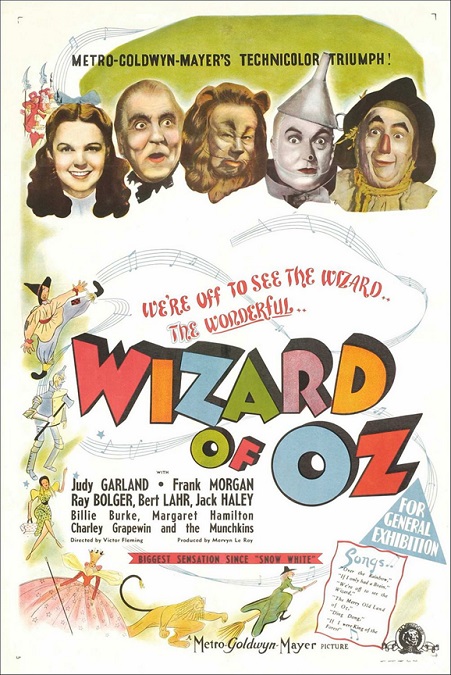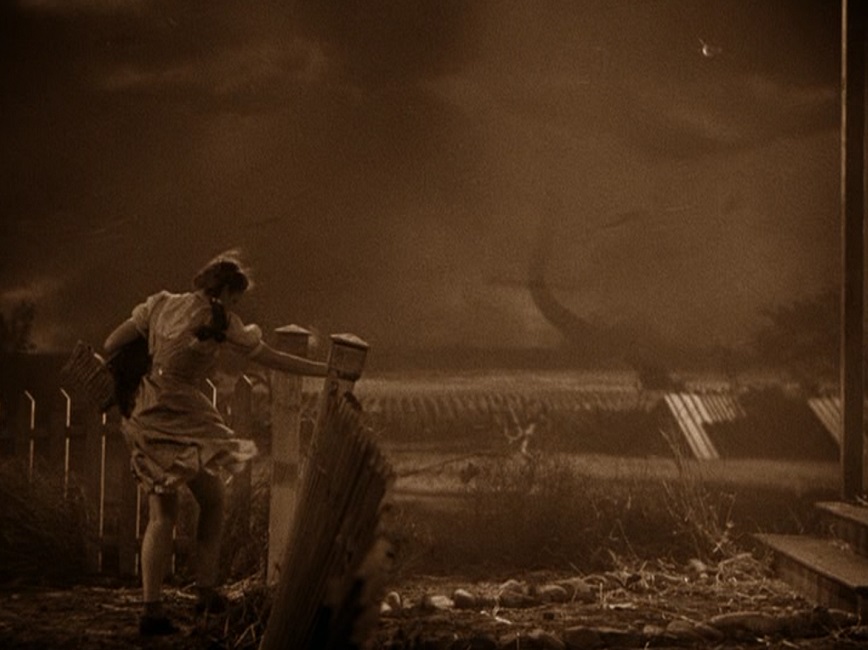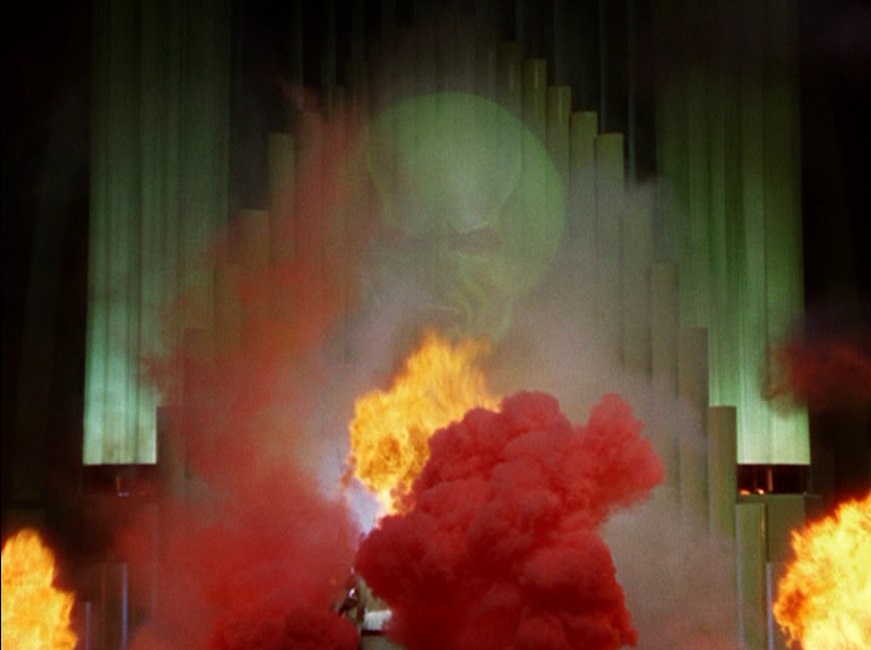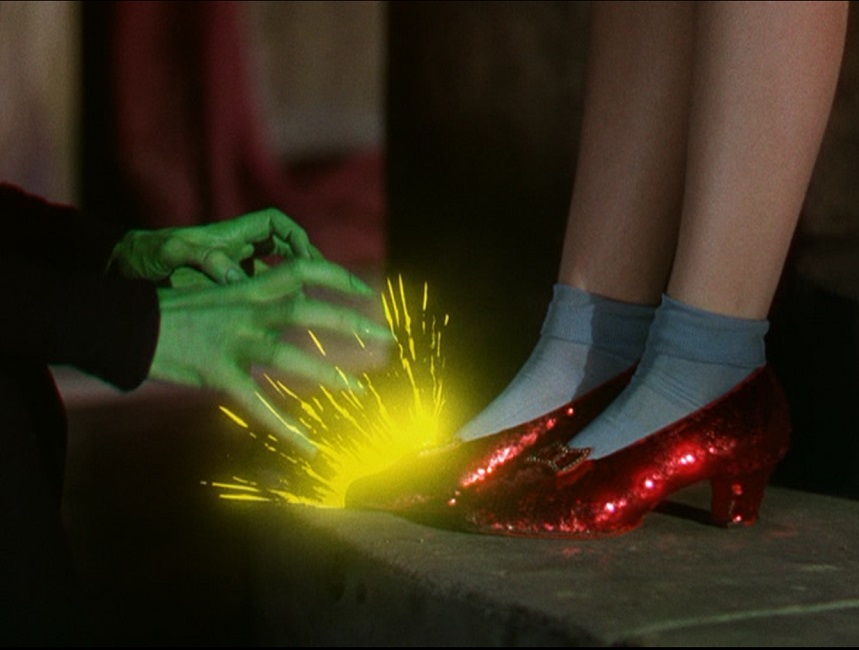




The Wizard of Oz – 1939
The Wizard of Oz was a special effects extravaganza! The effects were inventive, ground-breaking, and dazzling. This movie was filmed in Technicolor, and the filmmakers used both the black and white and color pallets to marvelous effect. I don’t want to take anything away from the wonderful effects of the 1939 Best Special Effects winner, The Rains Came, but I think Oz got robbed!
There were so many effects in the film, it is hard to know where to start. But easily, one of the most memorable of them was the tornado! The cyclone that carried Dorothy away to the magical land was amazing, and totally holds up, even by today’s standards. Apparently, it was made from a thirty-five foot muslin stocking wrapped around chicken wire, which was rotated by a motor. The base was attached to a car that was moved back and forth on a track. The farmhouse, fence, barn, and prairie were all miniatures, and the clouds were painted on glass. Composite in wind, dust, debris, and actors, and you have a fantastic twister!
Another of the film’s more iconic effects were the hideous flying monkeys. Of course, they flew with the help of thin piano wire, but the actors also wore battery packs that kept their wings flapping. The witch’s sky-writing effect was done with a miniature witch riding a hypodermic needle filled with dye, which was injected into an opaque mixture of water and oil, and filmed from below. The little detail of special water flowing into the tank, creating the effect of drifting air, was amazing.
Glinda’s floating bubble was made using a stationary silver ornament, and a precisely moved camera that created the illusion of a growing bubble. After that, specially processed film, lab dissolves, and perfect camera placement completed the illusion. The witch’s crystal ball effect was done by side-projecting images into a large glass bowl. A mirror at a forty-five degree angle reflected the projection onto a translucent screen inside the bowl. Masterfully done!
Other effects were achieved using pyrotechnics, smoke, little dashes of animation, mechanized miniatures, and matte paintings. The Wizard of Oz pulled out all the stops. The sheer quantity of effects in this movie far surpassed its competitors, and the inventiveness of many effects artists under the direction of Arnold Gillespie made for a phenomenal fantasy of a film. It was truly a different time in filmmaking history, and the things that they were able to do with practical effects were simply mind-blowing. Today, it would all be computer generated, but there is a tactile charm to practical effects that seems to be making a bit of a comeback in modern movies. I still think CGI is ultimately better, but practical effects can be just as impressive in the hands of creative and skilled effects artists.